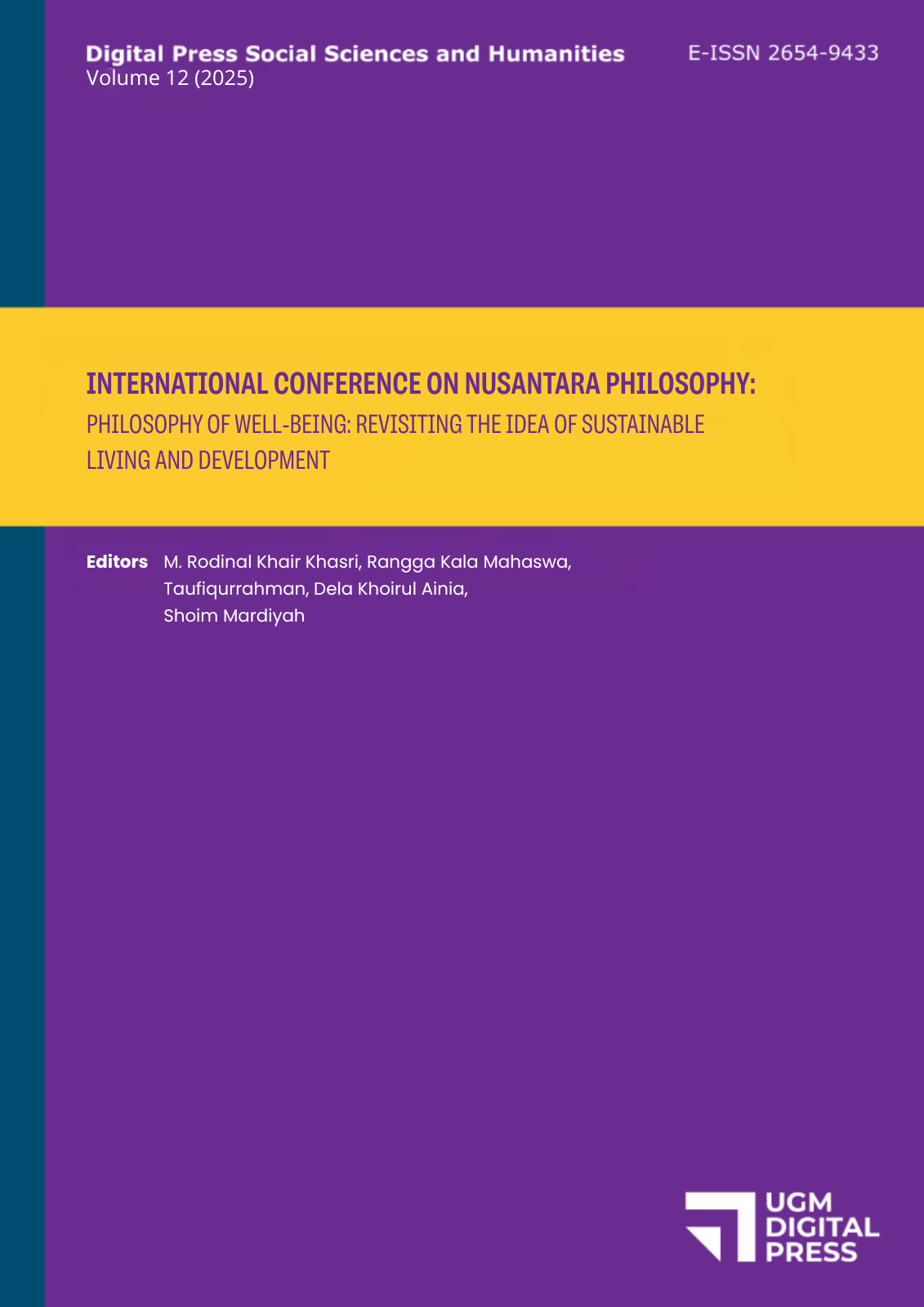Are Emotions Universal or Culturally Shaped?
Rona Utami
Faculty of Philosophy, Universitas Gadjah Mada
ronautami@ugm.ac.id
Abstract
Emotions are not just personal feelings, they are also shaped by the cultures and values we live in. This article explores the question: Are emotions the same everywhere, or do different societies feel and understand emotions differently? Using a philosophical approach, the article argues that emotions are more than biological reactions. They are ways of making sense of the world, shaped by language, tradition, and ethical beliefs. Emotions help us understand what matters, what is right or wrong, and how we relate to others. Focusing on Indonesian emotional concepts such as malu (shame), sungkan (respectful hesitation), and sakit hati(emotional pain), the article shows that emotions are part of moral life. These feelings guide behavior in families, communities, and society. They are not only about what someone feels inside, but also about shared expectations and values. The article compares these with ideas from Western philosophy, such as guilt, pride, and compassion, to show how different cultures express and understand emotions in unique ways. Rather than seeing emotional differences as a problem, the article argues that they can help us grow in understanding and empathy. Recognizing emotional diversity is important for building respectful relationships between cultures. The article concludes that emotions are ethical practices that shape who we are and how we live with others. By paying attention to how emotions work across cultures, we can create a deeper, more humane understanding of what it means to live well in a global world. This research concludes that understanding the plurality of emotional expressions and cultivating emotional awareness is essential for intercultural harmony and mutual respect
Keywords
emotions, philosophy of emotion, ethics
References
Aristotle. (2009). Nicomachean Ethics (W. D. Ross, Trans.). Oxford University Press.
Barrett, L. F. (2017). How emotions are made: The secret life of the brain. Houghton Mifflin Harcourt.
Beatty, A. (2013). Current emotion research in anthropology: Reporting the field. Emotion Review, 5(4), 414–422. https://doi.org/10.1177/1754073913491843
Doi, T. (1973). The anatomy of dependence. Kodansha International.
Ekman, P. (1992). An argument for basic emotions. Cognition and Emotion, 6(3–4), 169-200. https://doi.org/10.1080/02699939208411068
Geertz, C. (1973). The interpretation of cultures. Basic Books.
Hunt, L. (2006). Martha Nussbaum on the emotions. Ethics, 116(3), 552–577. https://www.jstor.org/stable/10.1086/498465
Markus, H. R., & Kitayama, S. (1991). Culture and the self: Implications for cognition, emotion, and motivation. Psychological Review, 98(2), 224–253. https://doi.org/10.1037/0033-295X.98.2.224
Mesquita, B., & Frijda, N. H. (1992). Cultural variations in emotions: A review. Psychological Bulletin, 112(2), 179–204. https://doi.org/10.1037/0033-2909.112.2.179
Nussbaum, M. C. (2001). Upheavals of thought: The intelligence of emotions. Cambridge University Press.
Pavlenko, A. (2008). Emotion and emotion-laden words in the bilingual lexicon. Bilingualism: Language and Cognition, 11(2), 147–164. https://doi.org/10.1017/S1366728908003283
Solomon, R. C. (2003). Not passion’s slave: Emotions and choice. Oxford University Press.
Wierzbicka, A. (1999). Emotions across languages and cultures: Diversity and universals. Cambridge University Press
ronautami@ugm.ac.id
Abstract
Keywords
emotions, philosophy of emotion, ethicsReferences
Aristotle. (2009). Nicomachean Ethics (W. D. Ross, Trans.). Oxford University Press.
Barrett, L. F. (2017). How emotions are made: The secret life of the brain. Houghton Mifflin Harcourt.
Beatty, A. (2013). Current emotion research in anthropology: Reporting the field. Emotion Review, 5(4), 414–422. https://doi.org/10.1177/1754073913491843
Doi, T. (1973). The anatomy of dependence. Kodansha International.
Ekman, P. (1992). An argument for basic emotions. Cognition and Emotion, 6(3–4), 169-200. https://doi.org/10.1080/02699939208411068
Geertz, C. (1973). The interpretation of cultures. Basic Books.
Hunt, L. (2006). Martha Nussbaum on the emotions. Ethics, 116(3), 552–577. https://www.jstor.org/stable/10.1086/498465
Markus, H. R., & Kitayama, S. (1991). Culture and the self: Implications for cognition, emotion, and motivation. Psychological Review, 98(2), 224–253. https://doi.org/10.1037/0033-295X.98.2.224
Mesquita, B., & Frijda, N. H. (1992). Cultural variations in emotions: A review. Psychological Bulletin, 112(2), 179–204. https://doi.org/10.1037/0033-2909.112.2.179
Nussbaum, M. C. (2001). Upheavals of thought: The intelligence of emotions. Cambridge University Press.
Pavlenko, A. (2008). Emotion and emotion-laden words in the bilingual lexicon. Bilingualism: Language and Cognition, 11(2), 147–164. https://doi.org/10.1017/S1366728908003283
Solomon, R. C. (2003). Not passion’s slave: Emotions and choice. Oxford University Press.
Wierzbicka, A. (1999). Emotions across languages and cultures: Diversity and universals. Cambridge University Press

